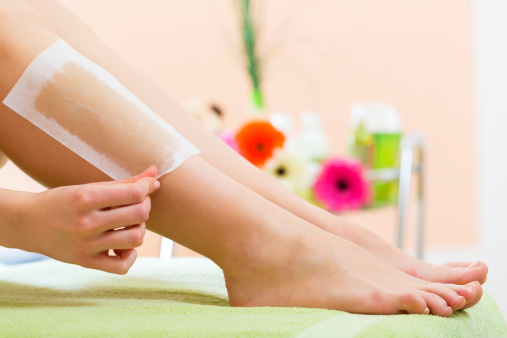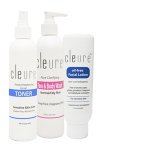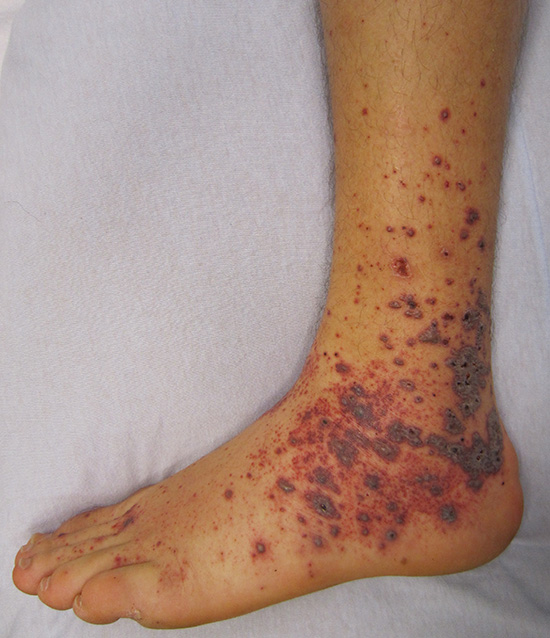Sugar Hair Removal is A Sweet Alternative to Waxing and Other Methods
A lot of people are just finding out about the process of sugar hair removal, and they're under the impression that this is something new and modern. On the contrary, the practice goes back centuries to ancient Egypt. Who knew that the issue of hair removal goes so far back into history?
This apparently timeless procedure is similar to waxing, but it uses ingredients that are all natural, so there is less chance of an allergic reaction to any chemicals. Proponents of this method also claim that it is not as painful or as irritating as waxing.
There are salons in some areas that provide this type of hair removal service, but in most areas they're still hard to find. If you are interested in trying it out, but you can't find a salon, you can buy sugaring kits online and in some beauty supply stores.
You can also make your own in your kitchen, using ingredients that you most likely will have on hand. If you choose to go for the kit, be aware that some products still contain wax, so check the label to be sure you're getting a true sugaring formula.

The Sugaring Process
There are actually two different methods for sugar hair removal, the paste method and the gel method, which is considered easier and more traditional.
The paste method
- 1/16 inch of hair growth is necessary before you can use this method.
- The paste can be used at room temperature, as long as it is spreadable.
- The paste is applied and removed with your hands.
The gel method
- This is the method that is considered easier and more traditional.
- 1/4 inch of hair growth is necessary for this method to be successful.
- The gel is thinner than the paste, and it should be lukewarm.
- The gel is applied with a wooden applicator.
- A cloth strip is used to remove gel and hair.
How to Make Your Own Sugar Hair Removal Paste
The interesting feature about this recipe is that you may end up with a paste, but a little time in the microwave will give it the consistency of a gel, if that's what you prefer.
While it seems pretty straightforward at face-value, it may take some practice to get the right results. Temperature, timing, and proportions are all very important to produce a paste that is spreadable and a gel that is not runny.
Here's what you'll need:
- 2 cups granulated white sugar
- 1/4 cup lemon juice, strained to remove seeds and pulp
- 1/4 cup water
In a large, heavy saucepan, combine sugar with lemon juice and water. Heat on medium temperature, stirring constantly, until mixture begins to bubble. Immediately lower the heat so that the sugar continues to simmer but does not boil. Continue stirring as the sugar dissolves and begins to darken. TIP: A wooden spoon is the best choice for stirring sugar, as rubber spatulas will melt and metal utensils may get hot.
After 25 minutes, once the mixture has darkened to the color of strong tea, it is ready. Allow it to cool slightly and pour into plastic containers to finish cooling. When the paste is slightly warmer than room temperature and spreadable, you can use it as a paste, microwave it to use as a gel, or seal and save until you're ready to use it.
When You're Ready
Before you apply the paste or gel, you need to wash and thoroughly dry the area you'll be sugaring. Any moisture, creams, oils, or other residue can prevent the sugaring solution from adhering to the hair. Dust on some talcum powder or cornstarch and rub it in to create more surface on the hair for the paste or gel to get a grip on.
- To apply paste: After the paste has cooled to room temperature, use your hands to scoop up about a quarter cup of the paste and form it into a ball. Use less if you're going to be working on a smaller area, such as the area above your lips. Since the mixture is sticky-it is sugar, after all-you might want to use thin plastic gloves for this.
After you’ve worked the ball of sugar paste into a spreadable consistency, apply it to the area in the opposite direction of the hair growth, pressing firmly so that the paste is securely adhering to the hair.
Holding your skin taut with one hand, pull the paste off in one quick motion, moving in the direction of the hair growth. Do not pull upward; that will cause hair breakage. If there is any residue left, you can collect it by rolling the sugar ball over it again, just as you used to do with bubble gum when it popped on your face.
Yes, there will be a slight ouch factor; after all, with sugar hair removal you’re still pulling hair out of the follicle. Just keep in mind that it’s less painful than standard waxing methods because it doesn’t pull off the top layer of skin.
Once you’ve finished with one area, you can move on to another. You can even re-use the ball of paste a couple of times, but no more than that. When you’re finished, simply rinse the area with water to get rid of any residue.
- To apply gel: To bring the paste to gel consistency, microwave it in increments of thirty seconds until it seems like thick honey when you stir it. At this point it’s VERY IMPORTANT to test the temperature to avoid burning your skin.
Using a wooden applicator such as a Popsicle stick for small areas or a tongue depressor for larger areas, spread a very thin layer of the gel in the same direction as the hair growth.
You can buy specially made fabric strips for the next step, or you can make your own out of cotton fabric such as muslin or denim. Press the strip firmly into the gel, leaving the edge free so you can get a good grip. Again, pull the skin taut, and quickly pull the strip away from the skin in the opposite direction of the hair growth.
Once you've finished the area, wash off the residue with water and dry. You will probably notice that your skin seems smoother, in addition to being hair-free. This is because the sugaring process removes dead skin cells along with the hair.
Sometimes the paste or gel will lose the desirable consistency before your sugaring session is finished. In this case, simply reheat in the microwave until it reaches the right spreadability.
If it’s gotten too hard to work with, add about a tablespoon of water before you microwave, and stir until it’s spreadable again. Don’t forget to always test for temperature after you have reheated it.
Why Sugaring is Such a Sweet Technique
If you are someone who has previously used waxing or other means getting rid of unwanted hair, you will probably find several reasons to prefer sugar hair removal:
- It is less painful than waxing.
- Unlike wax, sugar gels and pastes do not adhere to live skin cells, so there is less irritation after sugaring.
- It’s OK to reapply to missed areas, within reason.
- Consistent sugaring will gradually weaken the hair roots, possibly leading to no regrowth of hair.
- One sugaring treatment will typically last from 4 to 6 weeks.
- Cleanup is easy, no need to use special solvents to remove residue from your skin.
For Anyone, Any Time? Probably Not
As with just about anything, there are some areas where caution should be observed.
- Do not use this technique on skin that is scratched, cut, sunburned, or irritated
- Men should not try this method in the beard area
- You should never use sugaring on moles
- Many types of skin treatment require various waiting periods before attempting sugar hair removal:
- If you undergo an exfoliation process such as microdermabrasion or even a mild chemical peel, do not attempt to use a sugaring method for at least seven days.
- If you maintain your golden glow by visiting tanning salons, stay away from sugar paste or gel on the same day.
- If you have had laser treatment to improve the texture of your skin, you need to wait one year; a two-year interval will be necessary if a doctor has given you a skin peel.
- Infectious diseases, blood or skin disorders, or any condition that makes you prone to infection are indicators that you should avoid this procedure entirely.
- Anyone who has used Renova, Retin-A, or other medications that cause thinning of the skin should avoid sugaring until they have gone 6 months to a year without taking the medication.
There are other medications and conditions that may indicate that you are not a good candidate for this technique. If you purchase a kit, read all cautionary information included with the materials. If you can’t find answers to your questions, consult a physician or an aesthetician to be sure it’s safe for you.
A Parting Word-Ants
Most people don’t consider those six-legged creatures when they are performing their grooming rituals, but we are talking about sugar, you know! Make sure you dispose of all materials you use carefully to avoid an invasion of these creatures. The cloth strips should go right into the washing machine, the area should be thoroughly washed with a cleaning solution, and any leftover sticks or other trash should be wrapped up and taken outside.
Home > Laser Hair Removal at Home > Sugar Hair Removal









New! Comments
Share your thoughts about what you just read! Leave me a comment in the box below.